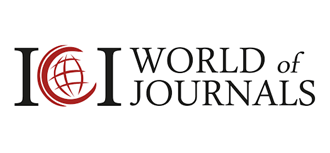Manipulations in Sport
Siniša Franjić*
Independent Researcher, Croatia, Europe
Submission: April 20, 2020; Published: June 08, 2020
*Corresponding author: Siniša Franjić, Independent Researcher, Croatia, Europe
How to cite this article: Siniša Franjić*. Manipulations in Sport. J Phy Fit Treatment & Sports. 2020; 9(1): 555724. DOI: 10.19080/JPFMTS.2020.09.555724
Abstract
Manipulation is defined as a deliberate systematic and controlled procedure or set of procedures by which the manipulator, using symbolic means, in suitable psycho-social conditions sends to the masses, through means of communication, certain messages with the intention to influence the beliefs, attitudes and behavior number of people. So that in matters about which there is no general agreement, and for which they are vitally interested, they would be directed towards the beliefs, attitudes, and values of the manipulator without being aware of it.
Keywords: Manipulation, Sport, Economic Implications, Ethics
Introduction
This paper aims at covering simple sport manipulations that do not include dysfunctions, distortions, corruption, and naked economic crime [1]. Some of them are not directly linked to making money out of the manipulation or taking an economic advantage from it such as hazing, sabotage, goading, diving, playing against the rules, gamesmanship, refereeing biases, health-compromising practices, naked violence, and hooliganism. Then comes those rule violations that enable the guilty ones to gain a competitive or economic advantage which eventually translates into pocketing money streams such as cheating to make money, technological manipulations in sport, tanking, and sandbagging.
Unexpected Consequences
Unexpected consequences of intended human actions and organizations prevail in competitive sport: every sport participant wishes or expects to win but only a few reaches the intended outcome [1]. This is exactly why sport attracts so much stadium attendance, so many TV viewers, and a great deal of sponsors, patrons, and financiers and, finally, so big inflowing money streams. Many unexpected sporting results are extremely positive from an economic standpoint; they attract attendances and revenues as best proofs of game outcome uncertainty, contention in a championship or a league, lasting suspense over all the duration of a match, competitive intensity of a sport contest, or the odds offered by a sport bookmaker or a broker. Uncertainty and unpredictability make sport contests an exciting opportunity for businesses around the world to take advantage of. But what would happen if uncertainty and unpredictability were taken away? The problem is that most sport manipulations kill outcome uncertainty and unpredictability, and, in the long run, they are likely to reduce or even phase out sports attractiveness to fans.
From a different standpoint, cheating, sabotage, playing with the sport rules or breaching them, refereeing biases and hooliganism are unexpected-and unwanted-results of intended wrong actions. They may be detrimental to the sport image, reputation, and development, and eventually violate the sport ethics. Sabotage which is not entirely unexpected-such as goading or diving-is only border line to the dark side of sport. A sport club’s fake accounting, embezzlement, bribery, doping and match-fixing are also unexpected, and unwanted, deeds in normal functioning of the sports industry, but when they happen to last, they form a sustainable-and sustained-economic dimension of the dark side of sport.
To provide an example of how training programmed may change at different stages of the year, a sample in-season training session has been provided [2]. This is necessary to aid in the management of players and ensure continued progression over time, reducing the risk of overtraining and/or under recovery symptoms and syndromes. Manipulation of exercise selection and various acute variables can be powerful in promoting the long-term health and performance of professional players. Depending upon the player profile and how various acute variables within the programmed are manipulated on any given day, training can be used to up-regulate functional movement after travel or develop different components of fitness needed for the game. This reinforces the key point that movement sits on a continuum, and gently adjusting factors such as tempo, load, intensity, range, and plane of motion can be useful ways to elicit different outcomes, depending on the needs or goals of the athlete. For example, following a period of long-haul travel to a competition and a high volume of technical practice, the total volume should be reduced. On such occasions, the focus can be placed on recovery strategies, rehabilitation drills and movement preparation to promote efficient biomechanics for that day. Conversely, when players show positive recovery and have a low volume of technical practice scheduled, greater emphasis can be placed on increased volume of work from a strength and conditioning perspective.
Economic Implications
Money primarily flows into sport from pockets or banking accounts of the fans, TV viewers, team owners, commercial sources such as sponsors, advertising and merchandising operators, and TV companies [1]. Allegations and actual cases of sport manipulation, match-fixing, illegal betting, bribery, and doping plague the whole sports industry. They are likely to divert some funds that consumers and investors would preferably stop spending in sport once its dark side is unveiled and publicized. The interest of fans, spectators, owners, and sponsors might fade away with an accumulation of manipulations. They might decide to disrupt their involvement or association with sports when their dark side would too often surface in the media and the justice courts.
Brand equity gained by sponsors (advertisers, merchandisers) from an association with successful teams or athletes in popular sports can not only prove very lucrative but also open many avenues that sports, teams and players can exploit for financial gain. What impact could manipulations trigger on the companies that have invested millions of dollars or euros in sport? How would sponsors react if it is reported that their star endorser has used PEDs or fixed the outcome of a match, or if an event is rife with cheating? Would sponsors then become more cautious in their use of sport to reach target audiences and spread their brand notoriety? At the same time, sport manipulations, corruption and crime have a cost for sponsoring companies since they hinder them gaining millions of dollars in brand value. There is yet little research investigating the impact of the dark side of sport on sport–sponsor and athlete–sponsor relationships as well as on how fans, spectators and TV viewers would react to an increased information, awareness, and knowledge about sport manipulations.
Match-fixing is a serious problem [3]. Corrupt sports betting and gambling activity by athletes, coaches, and other stakeholders in sports, particularly on the Internet, poses a serious threat to the fairness of sports competition and therefore to its very structure. In addition, corrupt playing by athletes and the so-called ‘‘black whistles’’ of referees have been all too common recently in the lesser leagues of European football/soccer. Sumo wrestlers in Japan have also been the subject of match-fixing controversy. In response to the general problem of corruption in and around the sports arena, the International Olympic Committee (IOC), as a leading stakeholder in the supervision of international sports law, has expanded its initiatives to detect and penalize matchfixing. It has employed International Sports Monitoring, a Swiss corporation, to monitor and track betting rings around the world. This effort involves the cooperation of some 400–450 oddsmakers, betting firms, and lotteries, and will also involve an educational program for athletes and officials.
Betting
With economic globalization and the Internet, online sports betting has become predominant [4]. The evolving betting environment has raised risks to the integrity of sport. However, with globalization of the economy on the one hand and, on the other hand, the Internalization of betting these kinds of risks have tremendously increased because now a major part of a global sport betting market is operating online. Now bettors can shop around bookmakers worldwide and bet at any second of time. It is more complex for potential fixers to evaluate the costs and benefits to them of engaging in manipulations of sporting events on the field for betting gain, but it is even more complicated to detect them in operation. Global criminal networks that take part in online rigged betting related to match-fixing are extremely difficult to trace, discover, crackdown, and sue in court. Markets and situations are especially susceptible to corruption such as increased betting market liquidity, situations where the probability that the fix will be both successful and undetected is very high while the probability of detection lowers on online betting-related match-fixing global black markets.
Along with technological evolution and pushed forward by Internet networking, the sports betting market, as with all the other financial markets, became genuinely global. The extent to which the market is now globalized is evident in soccer, where odds movements in Asia tend to be mirrored in Europe within one minute or less. With the Internet, bettors can use price comparison websites to check odds available at suppliers based all around the world. It is often assumed that the conditions in Internet betting appear to be not far from those of perfect competition. Obviously, it is not so as regards online bets related to a fix, and the perfect competition hypothesis is to be dropped when a nonnegligible number of bets are rigged—i.e., related to match-fixing. Nevertheless, in the new global competitive environment, bettors could shop around for the best odds on the Internet for the wager they wished to make, rather than rely on a local retailer.
Gambling
What is true is that the opportunities for gambling around sporting events have become generally easier, culturally more acceptable, and certainly more sophisticated in the products that are available such as spread betting and on-line betting exchanges [5]. The latter gambling product facilitates person-toperson betting with no traditional bookmaker taking a profit and allowing the gambler to be the bookmaker and make and ‘‘lay’’ bets. In the former, not only is the bet itself but also the size of the stake won or lost determined by events during the sports event. For example, in a cricket match, a bookmaker may make a forecast on the number of runs scored in an over and gamblers bet on whether that prediction is too high or low. Their winnings or losses will correspond with the difference between the runs scored and the bookmakers’ forecast.
The form of gambling involved here is known as ‘‘spot-betting’’ and is a type of gambling on a market created around the occurrence of a specific event or events that occur during the game e.g., when or against whom will the first corner be conceded in a football match. The focus on manipulation of sporting events has moved from being primarily on the result of a game (‘‘match fixing’’), that is the manipulation of the result of a sporting competition, to the more sophisticated and focused manipulation of an event or occurrence within a match, (‘‘spot fixing’’). In this incident, it was the bowling of several ‘‘no-balls’’ at pre-determined times during the cricket match which provide the opportunity to illegitimately bet on this specific happening. Arrange of sports have a myriad of such variables events that can be brought about by a player or players in unison. The sophistication of gambling opportunities available mean that illegitimate bets can be placed around these events and the unpredictability of sporting competition is desecrated.
Although there are different cultural and jurisdictional controls on gambling in countries around the world, these are increasingly difficult to enforce due to the technological nature of gambling, primarily via the internet. The regulation of the gambling industry-gambling is to a large part prohibited in lawcreates a criminal black market, which provides the environment for potential manipulation of matches and betting patterns. Huge amounts of money can be involved.
Violence
Violence is an inherent component in various sport practices though it is contained by the sports rules [1]. Most violent sports are often assessed to be ice hockey, rugby, mixed martial arts, American football, lacrosse, wheelchair rugby, boxing, wrestling, Australian rule football and water polo. Rules are different from sport to sport with the outcome that some sports are more violent on the pitch than others even when played by the rules. This is not to mean that sport violence is not likely to go beyond the rules depending on the opponents’ attitude, referee decisions, game contention and outcome. Whatever the reason, violence is normally under the control of the rules and the referees enforcing them. Thus, violence per se is not part of the dark side of sport, except when repeated excessive violence expands beyond the rules-even worse if remaining unsanctioned by the referee.
Despite significant differences in both fan culture and the problems of violence and disorder in connection with football, there has been a convergence of legal and policing tools designed to manage football crowds across Europe [6]. Set in a wider neoliberal political context, where there is an increasing emphasis on prevention and security at the expense of more traditional modes of criminal justice, the management of football crowds across Europe has seen the introduction and development of pre-emptive policing powers, administrative ‘control orders’, and the gathering and sharing of personal information on suspected ‘hooligans. This increasing social control of football crowds has been at the expense of both traditional state civil liberties and human rights under the ECHR (European Convention on Human Rights). These security-centric approaches to football crowd management are disproportionate to their human rights infringements given the actual extent and severity of the problem of football disorder and violence, and the existence of less restrictive—and more effective—alternatives.
Role
Sport is therefore more than an athletic endeavor and reaches beyond ‘pitch and track’ into the worlds of politics, business, fashion, entertainment, film and ‘crime’; it is often used as a ‘tool’ to promote a nation’s credentials on an international stage [7]. This ‘national promotion’ is only one part of the usefulness of sport; it has provided legitimacy to military regimes, increased international prestige and national pride, and stimulated economic and commercial success. These important roles that sport has played are not in order of importance and are open to manipulation. Instead of trying to put them in some sort of order, it is better to see sport as playing a collective social, political, and cultural role, of which the associated elements of commercial interests are a recent development.
While fraud and corruption in sport are nothing new, the context in which some frauds and acts of corruption occur, however, is now different. The changes – the codification of sport from amateur to professional status, the manipulation of sport as a form of national propaganda and the increased commercialization of sport – have all contributed to acts of fraud and corruption. However, rather than dwell on the fear that professional codification would lead to increased corruption, which has been dealt with elsewhere and the abuses of athletes by nations in search of glory and justification of political systems.
Dynamical System
When a system establishes a state only because of the dynamical interactions among individual elements within the system, the state is self‐organized [8]. External processes do not cause self‐organization; rather, this process is generated by components within the system. Patterns that emerge are different from the components that make up the system and cannot be predicted solely from the characteristics of the individual elements. Self-organization can be identified in a system by capturing some properties such as: (1) a control parameter (e.g., the manipulation of the speed of the treadmill in the locomotion example), and an order parameter (e.g., the relations between limb kinematics that define the overall states of standing, walking, and running). Here, continuous changes in the control parameter (manipulated by the experimenter) should move the system through critical points (phase transitions or bifurcations) in which the order parameter value (the collective variable that captures collective organization of behavior) changes discontinuously; and (2), multi‐stability and hysteresis. A multi‐stable system is one in which, for a single control parameter, there are multiple stable values of one or more order parameters (e.g., there are certain speeds which the performer changes from walking to running and back many times). Also, multi‐stability implies that noise in the system is sufficient to cause the system to switch between its multiple stable states or attractors without any change in the control parameter. Hysteresis occurs when the value of the critical point (the point at which manipulation of a control parameter causes a bifurcation in the order parameter) depends upon the direction of change of the control parameter (e.g., the speed for changing from walking to running rarely coincides with the value of decreasing speed that moves the locomotion system to transition between running and walking).
The paradoxical relationship between stability and variability explains why skilled athletes are capable of both persistence and change in behavior during sport performance. Dynamical systems can, thus, offer formal models for such explanation when finding appropriate low‐dimensional descriptors, that is, order parameters which “compress” the information needed to describe system’s behavior, and derive differential equations that describe their time evolution and nonlinear dependence on control parameters. When studying human performance, ecological dynamics is a suitable theory of behavior for guiding the use of tools and methodologies for understanding behaviors of dynamical systems.
Risk Society
Sport faces a range of threats to its integrity, both internal and external [9]. Accusations of corruption, doping, betting, manipulation, human rights abuse, and other areas of activity run the risk of eroding public trust in its governance and practice and support for sport at all levels. As the reputation of sport is diminished and tarnished, its capacity to be a resource of hope is eroded. The practice and traditions of, and attitudes towards, betting, corruption and match fixing in sport differ from culture to culture. Despite such variations, several cross-cutting principles tend to form an orthodox approach to protecting the integrity of sport. Conflicts of interest are invariably the biggest challenge faced by many sports organizations. Acknowledging that attitudes to sport, gambling and corruption vary culturally implies that a one-size-fits-all approach to this problem is not the best solution.
The notion of a risk society may not provide all the answers in helping students, teachers and researchers think about sport, gambling, and corruption. It provides a useful framework within which they can come to conclusions about the nature of some problems in sport. A risk society or a society at risk is not simply descriptive, but adopts a critical approach to sport, gambling, and corruption. The question is what we can learn about normal processes in different parts of the world that are either risky or seek to comprehend misfortune in the form of risk. If we try to prevent all undesirable consequences, the danger might be inactivity because of the nature of the task. In a society of risks, the issues derive, not so much from what each person does in isolation, but from the very fact that, because they often perceive a state of isolation, the actions are often uncoordinated and dispersed. If global sport is framed as a risk, and if global sporting processes are taken to be a set of processes that no one controls, then this should not be viewed as a reason for inaction simply because such abstract or real forces are deemed to be overwhelming. Nor is the answer to the magnitude of the challenge of sport, gambling, and corruption one of denial.
Ethics
Sport when it is ethically managed has the potential to contribute to a more harmonious society [10]. Increasing attention is directed towards ethics in sport and its importance in affecting other parts of society. It has been emphasized that the appraising of ethical guidelines in sport can be difficult due to different conceptualizations of what is ethical conduct. This means that ethics is inherently entrepreneurial due to its changing nature and role in sport. Ethical conduct is required in sport because rules and guidelines must be followed as part of fair play. The backdrop of competition in sport, encompassing a gap between performing and non-performing clubs has implications for entrepreneurial ethics. There are often cultural conditions that affect the ability of some sport teams to behave ethically. The intention of entrepreneurial ethics is to assist sport clubs and athletes perform within guidelines. Thus, the aim is to bestow sport clubs with the ability to utilize ethics in a positive way. There are moral dilemmas faced by sport organizations based on their position in society. Often government authorities engage with both public and private sporting bodies to understand the impact of moral transgressions. Despite this cross-partnership collaboration sport ethics is a vexed question and still under studied. For sport entrepreneurs, the ethics issue remains problematic due to uncertain aspects about its implications. This is noted by sport organizations perceiving ethics to not be critical to the overall functioning of their team.
There are different philosophies in sport that effect ethics. For some competition means winning at any costs including through cheating or immoral activity. The responsibility is on the referees or regulators to catch the unethical conduct rather than the perpetrators. This means there is some ambiguity when ethics is interpreted differently by people.
Gamesmanship is a term used in sport that has ethical implications depending on the context and extent of the behavior. For some, sport is about politics and to win there needs to be some manipulation of conduct for the aim of winning. This is evident in faking an injury that was popular in football before referees started to penalize players who seemed to be over emphasizing their injury. There is now more ability through replay technology to see whether a player has been injured. In addition, there are name calling in sport as part of the psychological warfare that goes on in sport. This has been considered as part of the game but recently there has been a backlash against this kind of conduct especially when it concerns gender or race.
Conclusion
Manipulation is intended to forcibly penetrate someone’s spirit to instill an opinion or behavior there, without the person being aware of coercion. It is all in that act that hides its manipulative nature. That is his essential aggression. Unlike physical violence, which provokes an explicitly obvious reaction, psychological or cognitive coercion is successful because of its concealment. Thus, the mechanisms of constructing a manipulative message depend on a double aspiration: to establish possible resistance and to mask the procedure itself. This is the basic difference between manipulation and proving, where the procedure itself is explained at the same time as persuasion. Although manipulation is sometimes used in everyday speech in a positive sense, most researchers point out that it is dishonorable and shameful for the one who uses it, no matter what goals he wants to achieve.
References
- Andreff W (2019) An Economic Roadmap to the Dark Side of Sport - Volume I - Sport Manipulations”, Palgrave Macmillan, Springer Nature Switzerland AG, Cham, Switzerland 3-45.
- Read PJ, Buckthorp J, Gould ZI, Llyod RS (2018) Golf” in Turner, A. (ed): „Routledge Handbook of Strength and Conditioning - Sport-Specific Programming for High Performance”, Routledge, Taylor & Francis group, Abingdon, UK 466-467.
- Nafziger JAR (2012) The Principle of Fairness in the Lex Sportiva of CAS Awards and Beyond” in Siekmann, RCR; Soek J (eds): Lex Sportiva - What is Sports Law, TMC ASSER PRESS, The Hague, The Netherlands, Springer-Verlag, Berlin, Germany 259.
- Andreff W (2019) An Economic Roadmap to the Dark Side of Sport - Volume III - Economic Crime in Sport”, Palgrave Macmillan, Springer Nature Switzerland AG, Cham, Switzerland 1-6.
- Gardiner S (2013) R v Amir & Butt [2011] EWCA Civ 2914” in Anderson, J. (ed): „Leading Cases in Sports Law”, TMC ASSER PRESS, The Hague, The Netherlands, Springer-Verlag, Berlin, Germany 291.
- Tsoukala A, Pearson G, Coenen PTM (2016) Conclusions: Social Control at the Expense of Civil Liberties and Human Rights” in Tsoukala A; Pearson G; Coenen PTM (eds): Legal Responses to Football Hooliganism in Europe”, TMC ASSER PRESS, The Hague, The Netherlands, Springer-Verlag, Berlin, Germany 169.
- Brooks G, Aleem A, Button M (2013) Fraud, Corruption and Sport”, Palgrave Macmillan, Basingstoke 1-2.
- Araújo D, Davids K, Renshaw I (2020) Cognition, Emotion and Action in Sport - An Ecological Dynamics Perspective” in Tenenbaum, G; Eklund RC (eds): Handbook of Sport Psychology - Volume I, Fourth Edition”, John Wiley & Sons, Inc., Hoboken USA 538-539.
- Jarvie G, Thornton J, Mackie H (2018) Sport, Culture and Society - An Introduction, Third Edition”, Routledge, Taylor & Francis Group, Abingdon, UK 661.
- Ratten V (2018) Sport Entrepreneurship - Developing and Sustaining an Entrepreneurial Sports Culture”, Springer International Publishing AG, Cham, Switzerland 118-120.






























